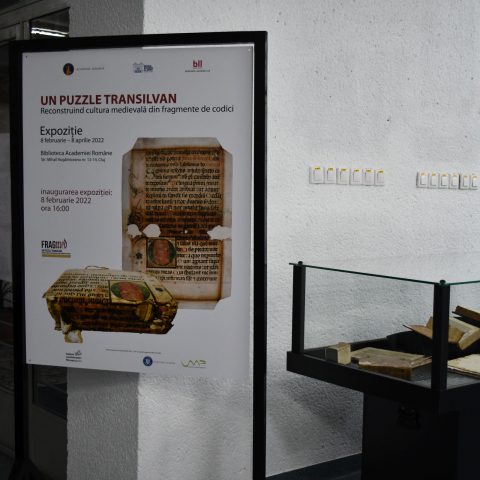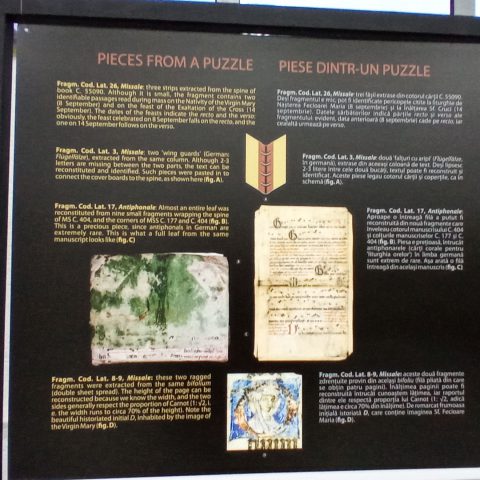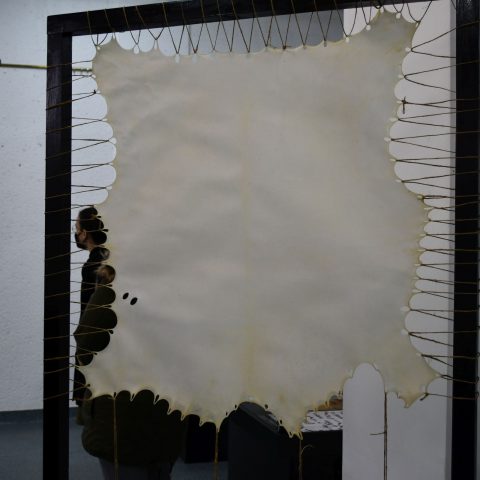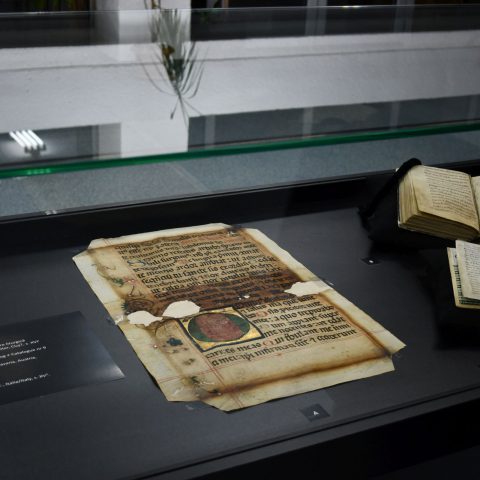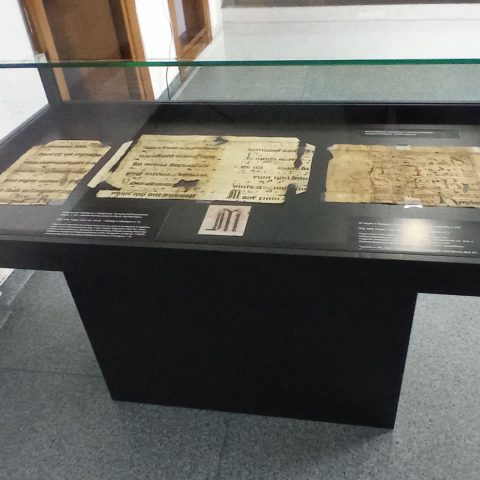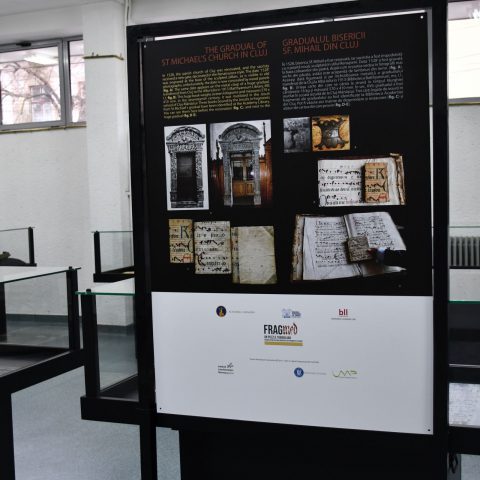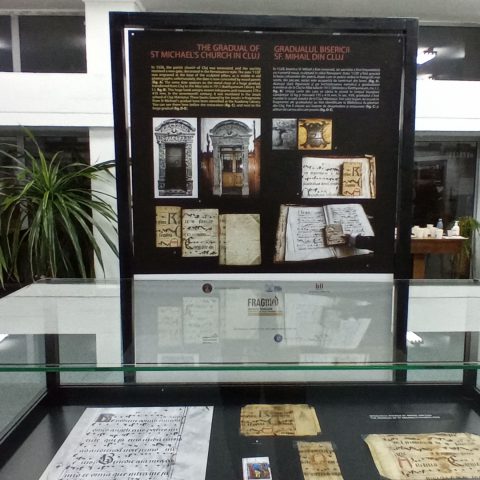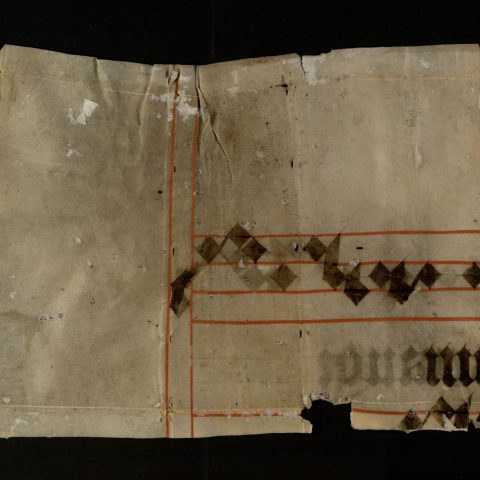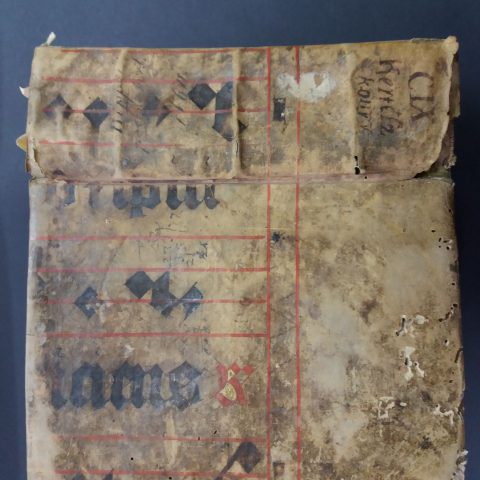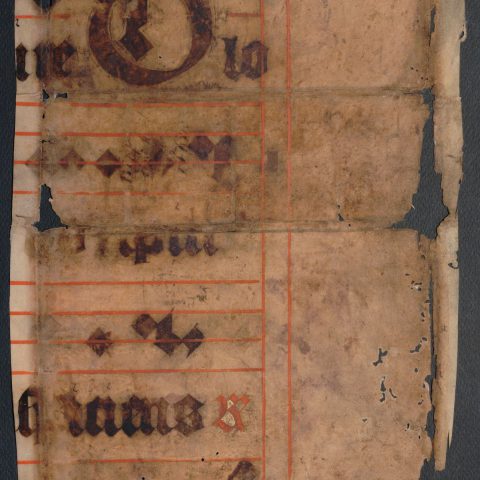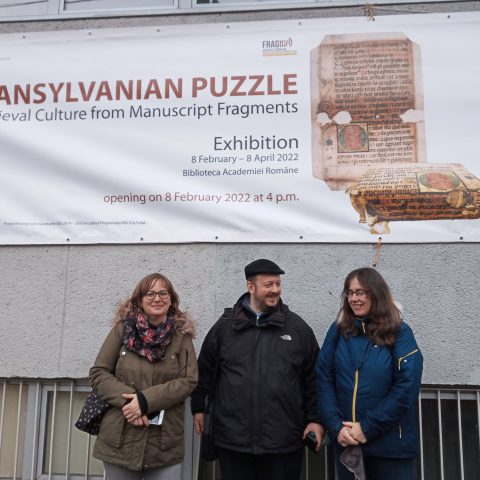On February 8, 2022, a special exhibition was opened in Cluj-Napoca, in the main hall of the Romanian Academy Library. The exhibition was called FRAGMED. Un Puzzle Translivan. As one can guess from this, the main focus of the exhibition was on medieval codex fragments (Figures 1, 2). The exhibition was conceived, designed and realized by professor Adrian Papahagi, philologist, literary historian and book historian, teacher at the Faculty of Humanities of the Babeș-Bolyai University in Cluj, as the conclusion of a two-year project. The well-considered concept was based on 21 selected manuscripts from the 12th–16th centuries, preserved in the Library of the Romanian Academy. On the one hand, it provided an overview of the manuscript culture of medieval and early modern Cluj and its immediate surroundings, the literacy of its ecclesiastical institutions, and its multi-directional, multi-layered book history. On the other hand, the exhibition gave a sense of the stages in the process of transformation, in which the leaves of the medieval codex became recycled bookbinding material (parchment book covers, flyleaves, spine and corner reinforcements) from the 16th century onwards. The stretched animal skin was also shown to the public (Figure 3), as was the final product, the codex and the leaves cut from it. The original documents – fragments and their host books – were well complemented by the digital copies of the full codices, sometimes reconstructed virtually, displayed above them. In addition to the books produced abroad, then imported, used and read in medieval Hungary, we could also see predominantly liturgical codices copied in local scriptoria. The 12th-century psalter, presumably from the Bavarian region and written in Carolingian minuscule, is one of the few complete manuscripts on display, but, valuable as it is, it is clearly not a relic of the bookish past of medieval Cluj. By contrast, the large, ornately decorated 15th-century psalter book lying in the repository next to it, with only one folio surviving, is certainly from the codex made and used locally by the Franciscans of Cluj.
Our research team has had an excellent professional relationship with professor Papahagi, the creator of the exhibition, for many years. In 2018, he worked together with one of our team members, Gabriella Gilányi, on the reconstruction of a 15th-century Transylvanian codex with musical notation, the so-called Kolozsmonostor antiphoner. The previously known fragments of the antiphoner, preserved in Budapest, in the Manuscript Collection of the Library of the Hungarian Academy of Sciences and in the National Archives of Hungary, were supplemented by two additional fragments found in the library of the Romanian Academy in Cluj-Napoca (Figure 5). The collaboration resulted in a joint study, which was published in the 2nd volume of the journal Fragmentology (https://www.fragmentology.ms/issue/view/2-2019/408). Thanks to Papahagi, two other key sources in medieval Hungarian music history have been supplemented with new folios. (1) Three pages of the Gradual of the parish church of St. Michael in Cluj, copied at the beginning of the 16th century and now preserved in the Batthyaneum in Gyulafehervár (the so-called Kolozsvár gradual), discovered in the library of the Romanian Academy and used as a binding in the 17th century, have been removed and restored and are now available for research (Figures 6a-b). (2) The huge decorative Antiphonal of the Cathedral of Várad (its main corpus is kept in the Diocesan Treasury and Library in Győr) written in the late 15th century, and its sister codex, the Várad Gradual, which can be identified from only a few fragments, have also been enriched thanks to Papahagi’s research (Figures 7, 8). A total of seven fragments of the Kolozsmonostor antiphoner, the Kolozsvár Gradual and the Várad codex family were exhibited.
Two young members of our research group, Eszter Göbölösné Gaál and Mózes Enyedi, actively participated in the opening ceremony of the exhibition. After their singing performance (https://www.facebook.com/adrian. papahagi/videos/633067937965987), it became clear to the wider audience that the medieval notated fragments can serve not only as objects of historical-philological reconstruction, but the notes preserved on them can also serve as vivid melodies that evoke the sacred music of Western Europe and Hungary, even after 700 years.
A compilation of the opening of the exhibition on TVR Cluj >>>
The newspaper “Faclia” in Cluj has a text report on the opening >>>

